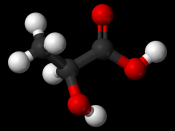The event that I have decided to undertake from the Athletics unit this term and elaborate more on is knowledge and understanding of the 400-meter sprint.
This event is usually taken place on a full size athletics field, which consists of one whole lap in a fast sprint, which takes around a time of a minute.
In that minute the runner would experience all factors of the race, from intensity to recovery.
In the 400 meters, intensity relates to the chosen speed, which is usually expressed as a percentage of your maximum effort, and how hard you train.
Other aspects include Duration, which is closely linked to intensity. For example the higher the intensity of your exercise is, the shorter the duration will be.
Another major factor in the 400-meter race is endurance because the athlete must maintain a sprint for such a long distance compared to the 100 and 200-meter sprint.
These are only a few of the factors that contribute to the outcome, but a car cannot run on no fuel, just like our fuel for the 400m race is the energy systems.
There are 3 energy systems that we classify, from the amount of work we are creating for ourselves.
These consist of ATP, Lactic Acid, and Aerobic capacity
In the 400m though, we use two of the three energy systems.
The first, and the most valuable of all is Adenosine Tri phosphate, or simply, ATP, which is the immediate usable form of chemical energy for muscular activity. This is one of the most important of the "energy rich" compounds that is stored in all cells, particularly muscle cells. All forms of chemical energy available from the food we eat must eventually be transferred into ATP before the muscle cell can utilize them
Actively contracting muscles...


